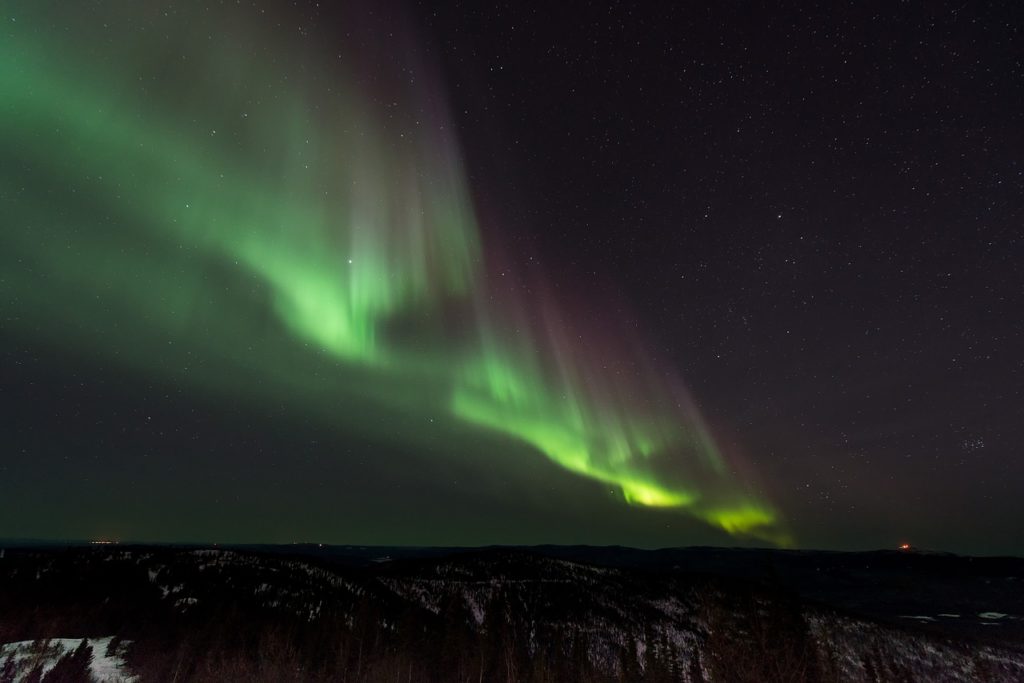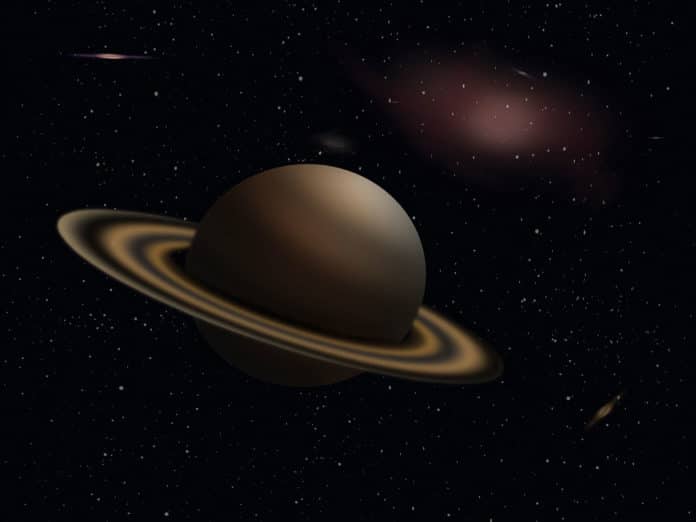After making a fateful plunge into the atmosphere of Saturn, NASA‘s Cassini spacecraft ended its 13-year journey of the ringed planet, Saturn. While the Cassini spacecraft is gone, its enormous collection of data about Saturn – still being analyzed to yield discoveries.
Scientists are busy analyzing some of its final data from the flybys—including images of Saturn’s ultraviolet auroras in unprecedented resolution.
An aurora, sometimes referred to as polar lights, northern lights (aurora borealis), or southern lights (aurora australis), is a natural light display in the Earth’s sky, predominantly seen in the high-latitude regions. Auroras are the result of disturbances in the magnetosphere caused by the solar wind.
Auroras are not just something that happens on Earth. At Saturn, it’s all very different. Its atmosphere is dominated by hydrogen, so auroras can only be seen in ultraviolet light. At the end of its mission, the Cassini spacecraft performed a set of orbits bringing it closer to Saturn than ever before. Bypassing over the planet’s polar regions at such low altitude, its ultraviolet camera could observe Saturn’s aurorae in unprecedented resolution.

Alexander Bader, Lancaster University Ph.D. student and lead author of two new studies published in Geophysical Research Letters and JGR: Space Physics, said, “Man questions about Saturn’s auroras remain unanswered, even after the outstanding success of the Cassini mission. This last set of close-up images gives us unique, highly detailed views of the small-scale structures that couldn’t be discerned in previous observations by Cassini or the Hubble Space Telescope.”
“We have some ideas about what their origin could be, but there is still a lot of analysis to be done.”
Satellite imagery alone will scarcely be sufficient to unwind the aurora’s secrets. At the point when located in the right region, Cassini was sometimes embedded in the particle stream connecting the auroras to the magnetosphere.
The first investigation of the spacecraft’s particle estimations recorded during these times indicated that Saturn’s auroras, like Jupiter‘s, are generated by substantially more energetic particles than Earth’s. Be that as it may, the fundamental physical mechanisms seem to show similarities between all the three.
Even though Cassini’s mission is over, the data it provided remains full of surprises and will continue to help researchers understand the workings of giant planet auroras, especially in combination with Juno observations of Jupiter’s magnetosphere.
